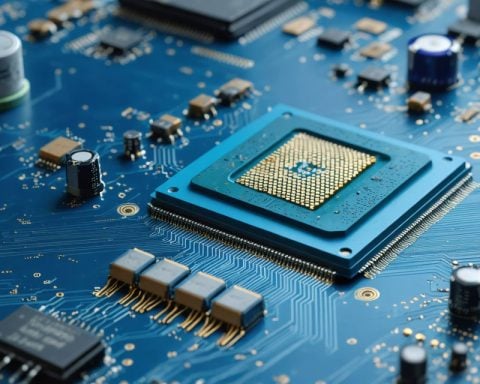The F-35 Lightning II stands as a testament to modern military aviation, integrating cutting-edge technology with unparalleled capabilities. Developed by Lockheed Martin, this fifth-generation multi-role stealth fighter is designed to perform a variety of missions, making it a pivotal asset for air forces around the globe. Its sophisticated features and operational flexibility make the F-35 a leader in contemporary military aviation.
One of the most impressive attributes of the F-35 is its stealth technology. Capable of evading detection by enemy radar, the F-35 employs advanced materials and design features to reduce its radar cross-section. This stealth design is crucial in modern warfare, where being undetected can mean the difference between mission success and failure. The ability to operate behind enemy lines without being easily engaged by surface-to-air missiles or enemy fighters reflects the F-35’s strategic advantage.
Equipped with an impressive suite of sensors, the F-35 is unparalleled in its ability to gather and process information. The Distributed Aperture System (DAS) allows pilots to gain a 360-degree view of the battle space, feeding crucial data to the aircraft’s avionics. This real-time situational awareness enhances decision-making and coordination with other assets, thus amplifying combat effectiveness. The F-35’s sensor fusion capabilities enable it to integrate information from various sources, providing pilots with a comprehensive understanding of the operational environment.
Power is another hallmark of the F-35 design. With the Pratt & Whitney F135 engine, this fighter jet boasts exceptional thrust and maneuverability. The F-35A variant, in particular, is known for its conventional takeoff and landing (CTOL) capabilities, making it suitable for use in a variety of air force operations. The aircraft can engage in both air-to-air and air-to-ground combat, demonstrating its versatility. For air superiority, the F-35 can carry advanced air-to-air missiles like the AIM-120 AMRAAM, as well as precision-guided bombs such as the GBU-31 JDAM for ground attack missions.
Additionally, the F-35 is designed with advanced electronic warfare capabilities. It can disrupt enemy radar and communications, giving U.S. and allied forces a significant edge in electronic combat. This capability is increasingly important in a conflict environment where the fight for information dominance is crucial. The Electronic Warfare (EW) systems, paired with its stealth features, allow the F-35 to engage and neutralize threats while minimizing exposure to counter-fire.
The F-35 also represents a leap forward in terms of maintainability and sustainability. The aircraft is designed for lower maintenance costs through the application of advanced materials and systems that enhance reliability. With its built-in diagnostics and automated maintenance support, the logistical burden on air forces can be significantly reduced. This efficiency ensures that the F-35 can remain operational longer, allowing for a robust response in times of crisis.
In conclusion, the F-35 Lightning II embodies a symphony of precision and power. Its fusion of stealth, advanced sensors, and flexible armament ensures that it meets the evolving demands of modern warfare. As nations continue to adapt to emerging threats, the F-35’s unique capabilities will play a crucial role in maintaining global security and operational readiness. With its cutting-edge technology and strategic versatility, the F-35 is undeniably a cornerstone of future aerial warfare.
Tips, Life Hacks, and Interesting Facts About the F-35 Lightning II
The F-35 Lightning II is not only one of the most advanced military aircraft in existence but also serves as a remarkable case study in technology, strategy, and operational efficiency. Below are some tips, life hacks, and interesting facts about the F-35 that can enhance your understanding of this cutting-edge fighter.
1. Understanding Stealth Technology:
To appreciate the F-35’s stealth capabilities, consider the importance of stealth in modern warfare. When discussing military tactics, emphasize how stealth technology can allow missions to be carried out undetected. Engage in discussions about how this affects global security and defense strategies.
2. Learn About Sensor Fusion:
Familiarize yourself with the concept of sensor fusion. This groundbreaking technology enables the F-35 to integrate data from multiple sensors, providing pilots with vast situational awareness. You can use online resources or defense websites to dive deeper into how sensor fusion works and its implications for air combat.
3. Explore the Role of Electronic Warfare:
The electronic warfare capabilities of the F-35 are crucial in modern conflicts. Investigating how aircraft can disrupt enemy communications can give you insights into future warfare trends. Tailor your research to explore real-world applications of electronic warfare.
4. Discover the Importance of Maintainability:
One of the understated features of the F-35 is its focus on maintainability. Learning about advanced maintenance protocols and systems can provide valuable lessons for any aerospace enthusiast. Reflect on how these efficiencies can reduce operational costs and increase the aircraft’s readiness.
5. Keeping Updated on Global Developments:
As an avid learner, stay updated on the latest developments regarding the F-35 and its role in international defense. Follow news outlets and defense blogs that focus on military advancements. Joining forums or discussion groups can also provide community insights and updates.
6. Engage with Interactive Simulations:
For those interested in flight mechanics, engaging with flight simulators that replicate F-35 operations can be enlightening. These simulators often include scenarios that require the use of the aircraft’s advanced capabilities, offering a hands-on understanding of its functionalities.
7. Understand the Cost and Investment Aspects:
Exploring the cost implications of the F-35 program can facilitate discussions about defense budgets and procurement strategies. Research how countries weigh the value of investing in advanced weaponry against budgetary constraints and national security needs.
8. Consider the Future of Military Aviation:
Think critically about how the F-35 will influence the future of military aviation. Will drones or unmanned vehicles take precedence? What role will pilots play in future combat scenarios? Engaging with these questions can enhance your perspective on defense technologies.
Interesting Facts to Share:
– The F-35 program is among the most expensive military programs ever, with total costs exceeding a trillion dollars over its lifetime.
– Different variants (F-35A, F-35B, and F-35C) cater to various operational requirements, such as traditional runways, short takeoff and vertical landing, and carrier operations.
– The F-35 is equipped with the world’s first operational warfare capabilities using artificial intelligence to enhance decision-making for pilots.
For more information about military aviation and the F-35, visit Lockheed Martin and stay informed about the developments in the aerospace and defense industry as well as the broader implications of military technology on global security.


















